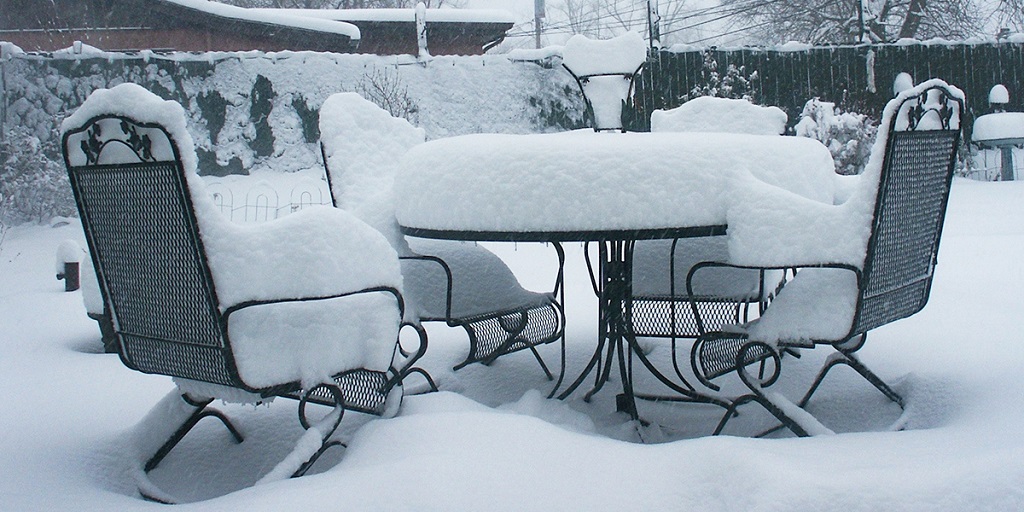Hey there, fellow garden enthusiast! Whether you’re a seasoned green thumb or just someone who enjoys the occasional breath of fresh air in their backyard, you probably know the joy of having a cozy, inviting outdoor space. And what’s an outdoor space without some beautiful garden furniture to relax on?
In this guide, we’ll dive into the nitty-gritty of making sure your garden furniture stays in tip-top shape for years to come. Imagine your garden furniture as the unsung heroes of your outdoor haven, enduring the elements and providing comfort through countless seasons. So, grab a cup of your favorite beverage, and let’s embark on this journey to preserve your garden furniture’s longevity.
Choose the Right Material
Let’s start with the basics. The type of material your garden furniture is made of plays a massive role in determining its durability. Think of it like choosing the right tool for the job.
Wood: If you’re a fan of the classic, rustic look, wooden furniture is a fantastic choice. Opt for hardwoods like teak, cedar, or redwood, as they are naturally resistant to decay and insects. Remember to treat your wooden furniture with a quality sealant to protect it from the elements.
Metal: Metal furniture is sturdy and can withstand the harshest weather conditions. Aluminum and wrought iron are popular choices due to their resistance to rust. A simple coat of rust-resistant paint can go a long way in maintaining their appearance.
Plastic: Plastic furniture is affordable and low-maintenance, but it might not have the same longevity as wood or metal. However, if you choose plastic, look for UV-resistant options to prevent fading.
Routine Cleaning
Just like you wouldn’t skip your daily shower, your garden furniture needs regular cleaning. Dust, dirt, and moisture can take a toll on its appearance and structural integrity.
For Wooden Furniture: Use a mild soap solution and a soft brush or cloth to wipe down wooden surfaces. Avoid abrasive materials that can scratch the wood. Rinse thoroughly and let it dry completely before applying any sealant or oil.
For Metal Furniture: Remove rust with a wire brush and apply a rust-inhibiting primer and paint. Regularly wash metal furniture with soapy water to prevent dirt buildup.
For Plastic Furniture: A mixture of mild detergent and water will do the trick. Rinse and wipe dry to prevent water spots.
Store Properly
Picture this: Your garden furniture as a superhero needing a secret hideout during the off-season. When winter or harsh weather strikes, storing your furniture is essential.
Wooden Furniture: If possible, store wooden pallet furniture in a dry, covered area like a garage or shed. If you can’t bring it indoors, use furniture covers to shield it from the elements.
Metal Furniture: Most metal furniture can withstand outdoor conditions, but storing it in a covered area during the winter can extend its lifespan. Use furniture covers if you can’t move it indoors.
Plastic Furniture: Plastic furniture is relatively low-maintenance but can still benefit from storage during harsh weather. Stack or cover them to protect against UV damage and keep them looking fresh.
Apply Protective Coatings
Think of protective coatings like sunscreen for your garden furniture. They shield it from the sun’s harmful rays, moisture, and other environmental factors.
For Wooden Furniture: Apply a sealant or wood oil once or twice a year to maintain its natural beauty and protect against moisture. This helps prevent wood from cracking or warping.
For Metal Furniture: Regularly apply a protective coating to prevent rust and maintain the finish. Paint or use specialized metal sealants to keep it looking pristine.
For Plastic Furniture: UV-resistant sprays or coatings can help plastic furniture retain its color and resist cracking. Apply as needed, typically every season or when you notice signs of fading.
Cushion Care
Don’t forget about those comfy cushions that make your garden furniture a haven of relaxation. They need some love too!
Clean Regularly: Remove and wash cushion covers according to the manufacturer’s instructions. A gentle machine wash and air drying usually do the trick.
Store Indoors: During the off-season or extended periods of non-use, store cushions indoors to protect them from rain, sunlight, and pests.
Invest in Covers: Cushion covers can benefit from protective covers designed to shield them from the elements when your furniture is not in use.
Mind the Placement
Think about where you place your garden furniture. It’s not just about aesthetics; it affects the furniture’s lifespan too.
Shade Matters: While it’s nice to bask in the sun, prolonged exposure to intense sunlight can cause fading and damage to furniture materials. Consider positioning your furniture in a shaded area or using umbrellas and canopies for protection.
Avoid Direct Contact with the Ground: Placing furniture directly on grass or soil can lead to moisture damage and rot, especially for wooden pieces. Use platforms or pads to lift the furniture off the ground slightly.
Regular Inspections
Just like how you’d check your car’s engine for any issues, it’s important to inspect your garden furniture regularly.
Check for Loose Parts: Give your furniture a gentle shake to see if any parts are loose or wobbly. Tighten screws or bolts as needed to maintain structural integrity.
Look for Signs of Wear: Keep an eye out for signs of wear, such as peeling paint, rust spots, or wood splintering. Address these issues promptly to prevent further damage.
DIY Repairs
Don’t be afraid to get your hands dirty and tackle minor repairs yourself. It can be a satisfying and cost-effective way to extend the life of your garden furniture.
For Wooden Furniture: Sand down rough areas and apply a fresh coat of sealant or paint. For small cracks or splinters, use wood filler and sand it smooth.
For Metal Furniture: Remove rust with a wire brush, apply rust-inhibiting primer, and repaint the affected areas.
For Plastic Furniture: Repair cracks or breaks using a plastic adhesive. Be sure to follow the product’s instructions carefully.
Protect Against Wildlife
Critters in your garden can become a nuisance, and they might take a liking to your garden furniture as well. Squirrels, birds, and even insects can cause damage.
Use Deterrents: Consider placing natural deterrents like mothballs or aluminum foil to deter animals from nesting or chewing on your furniture.
Regular Cleaning: Keeping your furniture clean can help prevent attracting unwanted attention from pests.
Don’t Neglect Winter
Winter can be harsh on your outdoor furniture. The combination of cold, moisture, and frost can take its toll.
Cover and Store: If possible, store your furniture indoors during the winter months. If not, use high-quality furniture covers to protect against snow, ice, and freezing temperatures.
Keep it Dry: Before covering or storing, make sure your furniture is completely dry to prevent mold and mildew growth.
In conclusion
Taking care of your garden furniture is like nurturing a beautiful garden itself. With a little attention, regular maintenance, and some TLC, your outdoor oasis will provide years of comfort and enjoyment. So, roll up your sleeves, and let’s ensure your garden furniture stands the test of time, making your outdoor space a haven for relaxation and memorable moments.
FAQs
1: How often should I clean my garden furniture?
Cleaning frequency depends on factors like the material and your local weather conditions. However, a general rule of thumb is to clean your garden furniture at least once every few weeks during the active outdoor season and before storing it for the winter.
2: Can I leave my wooden garden furniture untreated?
While some hardwoods are naturally resistant to decay, it’s still a good idea to treat your wooden furniture with a sealant or wood oil. This helps maintain its appearance and protect it from moisture and UV rays.
3: What should I do if my metal furniture starts to rust?
If you notice rust on your metal furniture, remove it with a wire brush, apply a rust-inhibiting primer, and repaint the affected areas. Regular maintenance can prevent rust from spreading.
4: Can I use regular household cleaners on plastic garden furniture?
Yes, mild detergent and water are generally safe for cleaning plastic furniture. Avoid abrasive cleaners that can scratch the surface. Additionally, consider using UV-resistant sprays or coatings to protect against fading.
5: How can I prevent my cushions from getting moldy?
To prevent mold growth on cushions, store them indoors during wet or cold seasons. Regularly wash and air dry cushion covers, and keep them clean to avoid attracting moisture-loving pests.







Average Rating